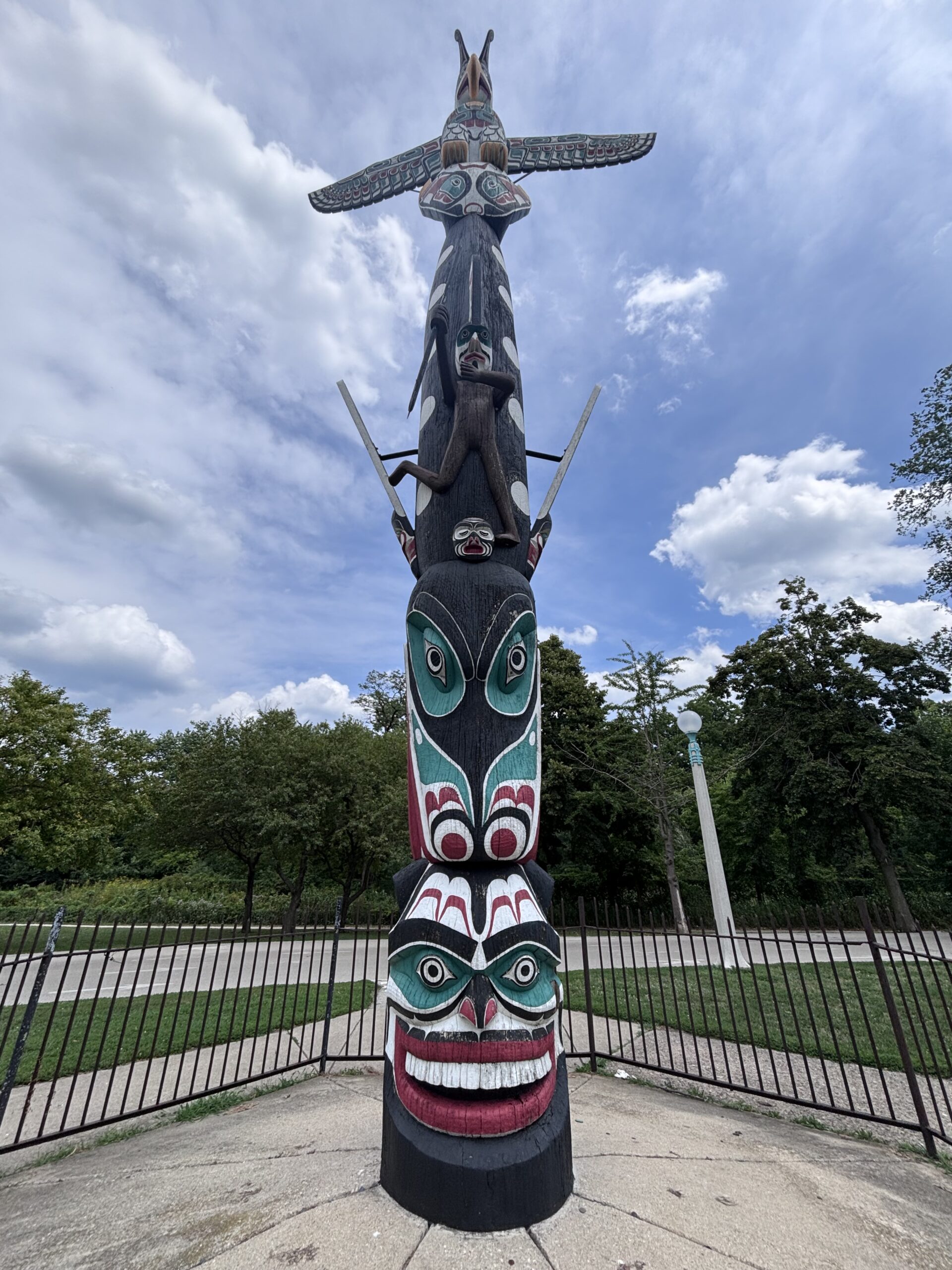
Public Art Along Chicago’s Lakefront Trail
Published on September 18, 2025
Discover public art along the shore of Lake Michigan with eATLAS’ Museum Campus Scavenger Hunt. The Adventure helps you discover eight works on the grounds of the Field Museum of Natural History, Shedd Aquarium, and Adler Planetarium.
By Dave Lifton (@daveeatschicago)
Stretching from Edgewater to South Shore, Chicago’s Lakefront Trail is a hive of activity in the warm-weather months. It provides 18 miles of paths for walking, biking, and jogging; playgrounds, skate parks, and dog runs; plus easy access to Navy Pier, the Museum Campus, Buckingham Fountain, and most of the city’s beaches.
Lesser known is that it’s a haven for public art, with murals, sculptures, and mosaics found either all along the lakefront or within a short walk. Start two blocks from the northern tip of the trail at Bryn Mawr Ave., where the underpass at Lake Shore Drive features two bricolage murals that work together. On the northern wall, Living reflects the history of Edgewater, with local landmarks amid sunshine, waves and birds. Across the street, Growing depicts the neighborhood’s hopeful future.
Half a mile south, Indian Land Dancing takes up both sides of the underpass at Foster Ave. They represent the importance of Native Americans to the growth of the Great Lakes region. All four pieces were created by the Chicago Public Art Group between 2007 and 2009.
Another piece of Indigenous art is found on the Lakefront Trail by Addison St. Kwa-Ma-Rolas, a 40-foot-tall totem pole carved by the Kwakiutl Indians on Vancouver Island, was purchased and donated to the city in 1929 by James L. Kraft, founder of Kraft Foods. But by the mid-80s, it was showing the signs of neglect, and it was returned, by request, to British Columbia. Tony Hunt, a woodcarver from the Kwagulth tribe, created an exact replica, and the new pole was reinstalled in Lincoln Park.
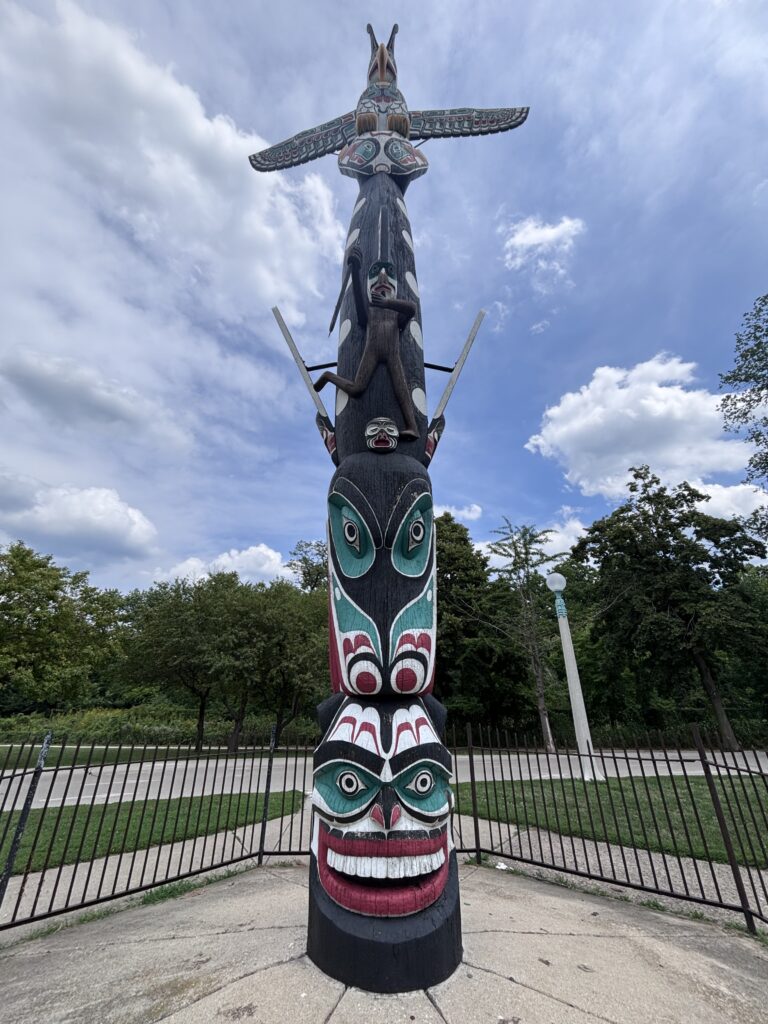
One of the newest features of the Lakefront Trail is the AIDS Garden at the former location of Belmont Rocks, a popular meeting place for Chicago’s LGBTQ+ community near the Northalsted neighborhood. Dedicated in 2022, its centerpiece is Self-Portrait, a 30-foot-tall sculpture by Keith Haring, an artist and activist whose work reflected the struggle for LGBTQ+ rights in the 1980s. Haring died from complications of AIDS in 1990.
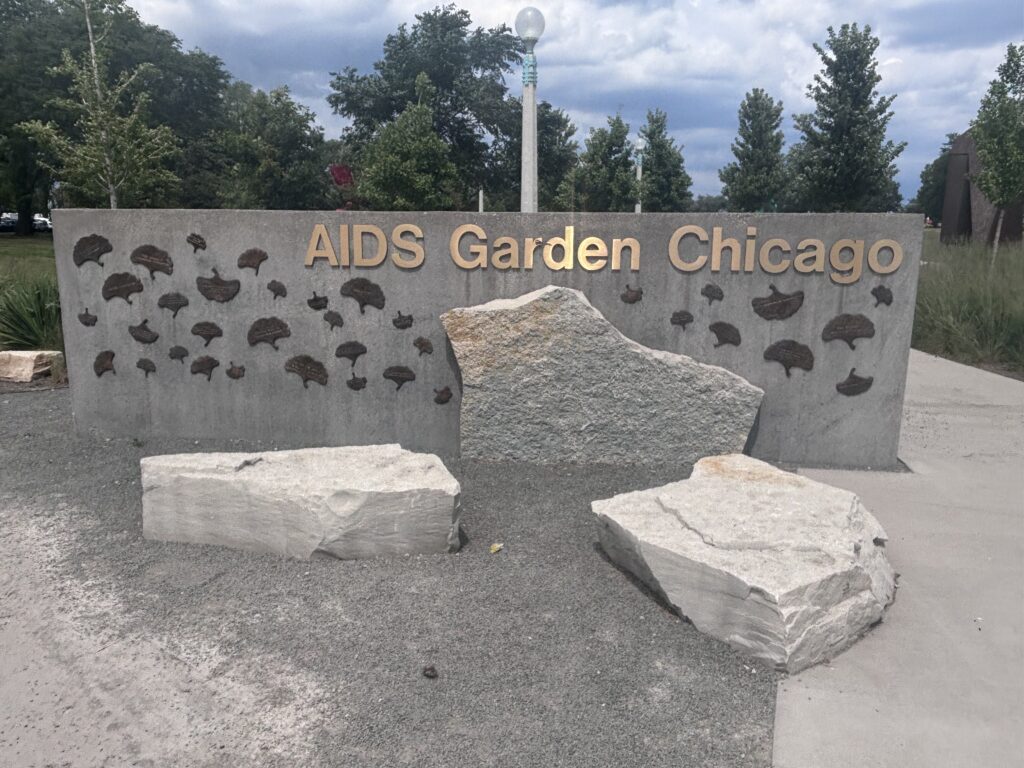
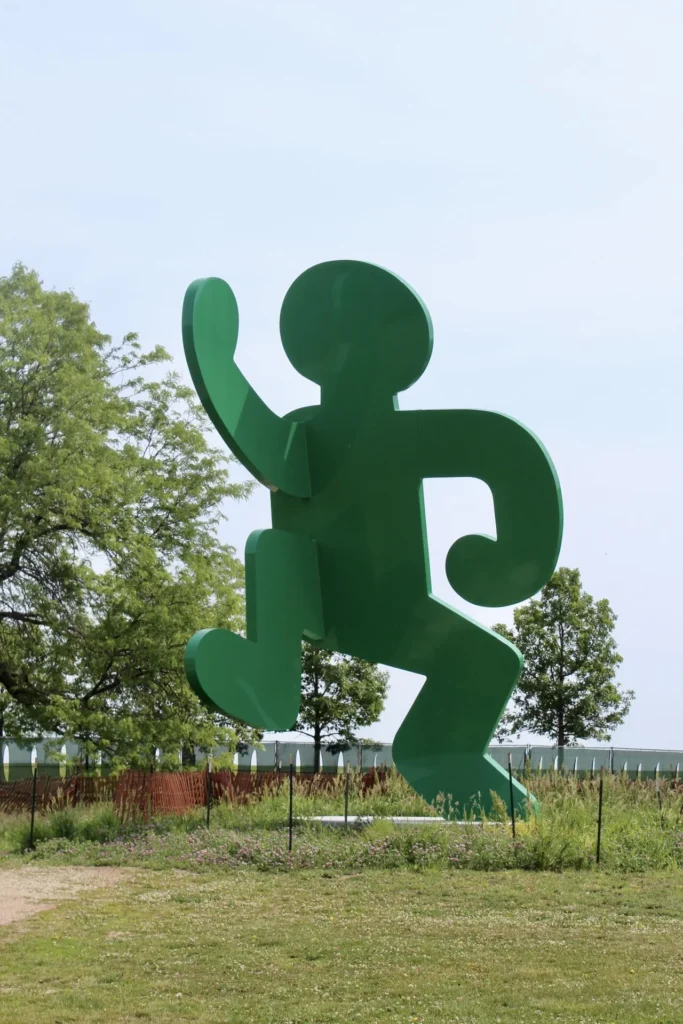
In 2013, Indira Freitas Johnson collaborated with Changing Worlds on Ten Thousand Ripples, 100 fiberglass sculptures of Buddha’s head that were placed in 10 communities. Johnson’s goal was to promote Buddha’s message of peace and in parts of town that have been torn apart by violence. The lakefront’s installation can be found arranged in a circle north of Fullerton Pkwy. between the trail and DuSable Lake Shore Drive.
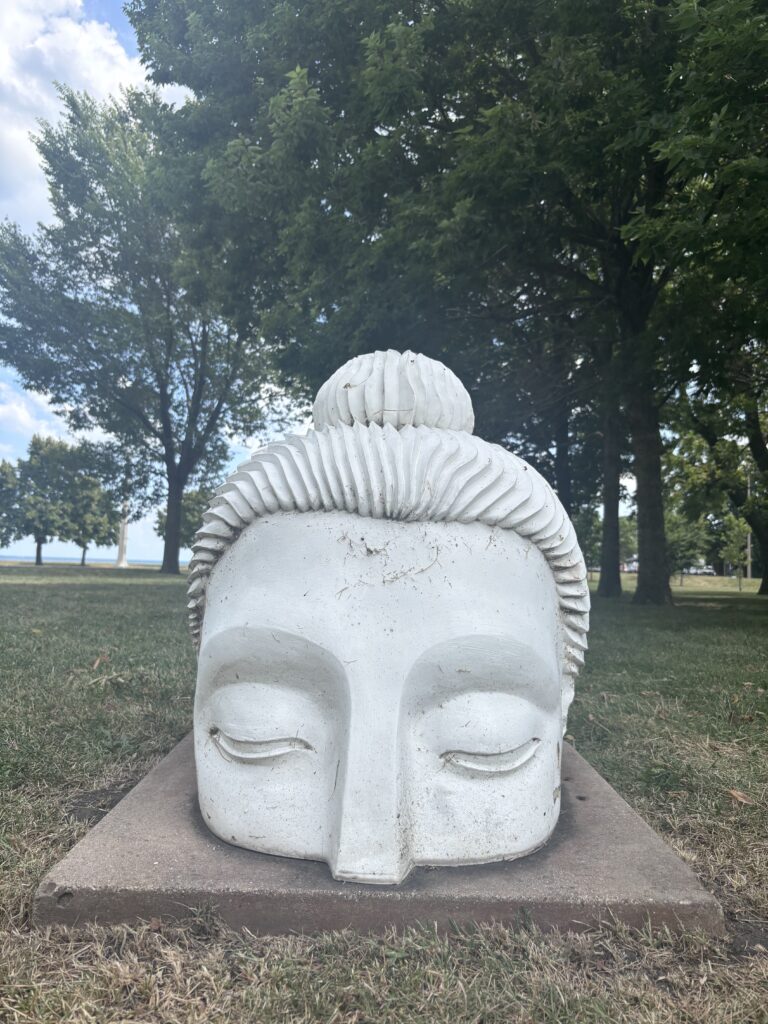
At North Avenue Beach, the Maurice Webster-designed Chess Pavilion is a piece of Modernist art by itself, with chessboards built into the tables and a dramatic overhang that provides shade. Flanking it are five-foot limestone statues of a king and queen, and a bishop, knight, and other chess pieces are carved into the structure. The sculptures were created by Evanston-born artist Boris Gilbertson.
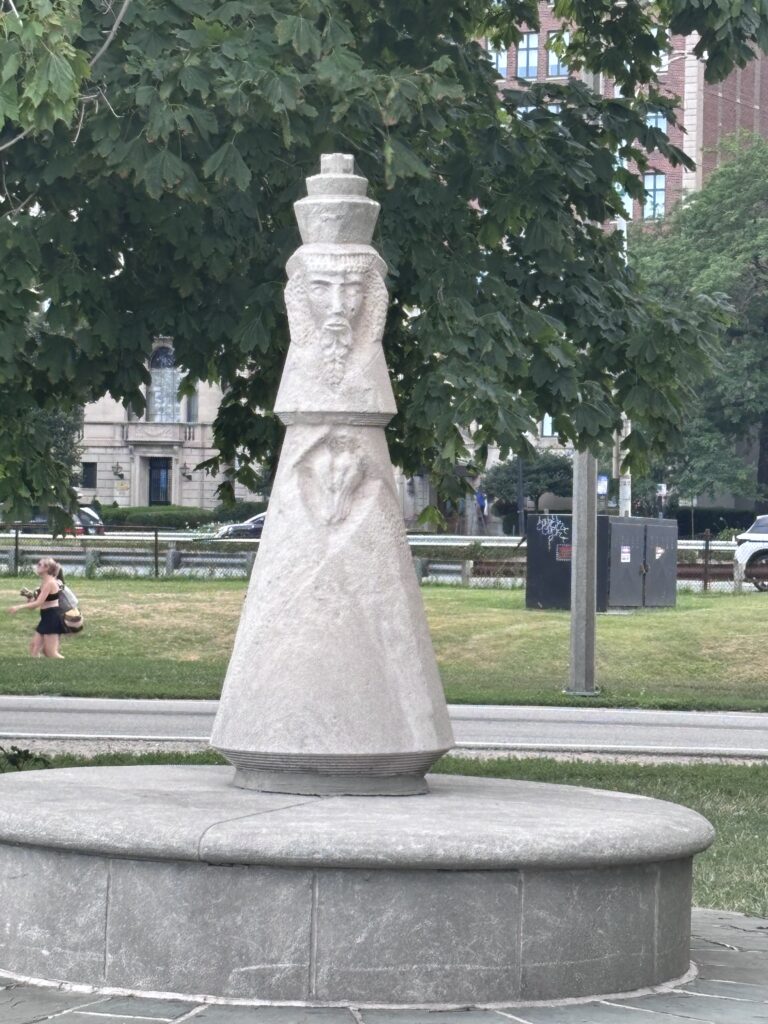
Underneath DuSable Lake Shore Drive on the south bank of the Chicago River, Ellen Lanyon’s Riverwalk Gateway tells the story of Chicago through the prism of the river. Spread out over 170 feet, the 28 panels start with Marquette and Joliet’s journey through the Chicago Portage en route to Lake Michigan and chronicle the Great Chicago Fire, the river’s reversal, and more up through the present day.
Chicagoan Bessie Coleman was the first African-American and Native American woman to hold a pilot’s license, having earned it in 1921 after attending flight school in Paris. Bernard Williams’ 2018 piece, Letter to Bessie Coleman, consists of four steel poles with symbols that reflect cross-culturalism, with the last pole featuring a bi-plane taking off. It is situated in Burnham Park near the outdoor fitness station.
Over 10 mornings in 1986, Roman Villareal and several friends carved a mermaid into the limestone revetments on the South Side. They never received permission from the city to create it, and their identity was kept secret until 2000, when Villareal’s daughter, who was the model for it, revealed it to the Chicago Sun-Times prior to a restoration of the revetments. The section with the mermaid was removed and stored during the work, and it can now be found just south of Oakwood Beach.
Lastly, Jackson Park’s Wooded Island was the site of the Japanese Pavilion during the 1893 World’s Columbian Exposition, and the Garden of the Phoenix remains as a symbol of the relationship between the U.S. and Japan. In 2016, Yoko Ono installed Skylanding on Wooded Island. The work consists of 12 stainless steel lotus petals as a message of peace. It’s her first permanent piece of public art in the Americas.
To quote a Monty Python sketch, the author may not know much about art, but he knows what he likes.

The Adventure starts when you say it does.
All eATLAS Adventures are designed and built by experienced eATLAS Whoa!Guides. They're always on. Always entertaining. And always ready to go.
Check out our Adventures!